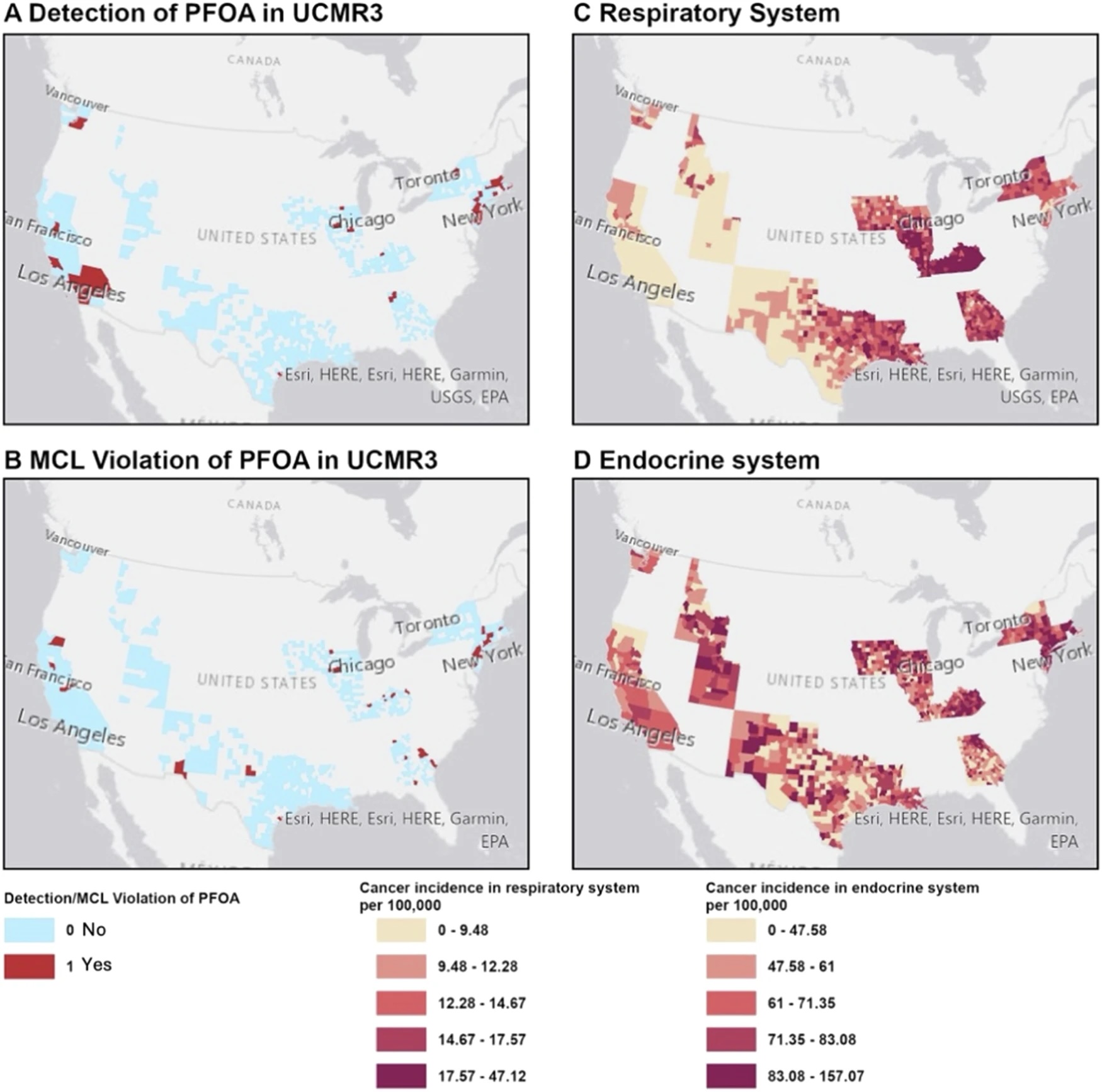A new study has found that US communities exposed to drinking water contaminated with 'forever chemicals' have up to 33 percent higher rates of certain cancers.
Scientists have good reason to believe a number of compounds referred to as PFAS (per- and
These chemicals were first used in consumer and industrial products in the 1940s, and though many have been replaced, PFAS unfortunately have a lasting legacy thanks to their remarkable thermal and chemical stability.
They're in our raincoats and upholstery, food packages, non-stick pots and pans, and fire-fighting foams. As these things disintegrate and become peppered throughout our environments, they've wound up in our food, our drinking water, and our bodies, too.
The new research is based on data collected between 2016 and 2021 from 1,080 counties in the United States, which equates to about 156.1 million people, roughly half of the country's population.
The team estimates that PFAS from drinking water may contribute to between 4,000 and 7,000 cases of cancer each year.
They found four types of cancer increased in places where some kind of PFAS had been detected at a concerning contamination level: these were digestive system, endocrine system, oropharyngeal, and respiratory system cancers.
"These findings allow us to draw an initial conclusion about the link between certain rare cancers and PFAS," says Keck School of Medicine researcher Shiwen Li. "This suggests that it's worth researching each of these links in a more individualized and precise way."
Easily dissolved in water, PFAS chemicals enter the body through the skin and lungs, but most significantly the tissues lining the digestive system, before being carried to other tissues via the bloodstream.

"Diet and drinking water are the primary routes of PFAS exposure, leading to direct contact with PFAS in the mouth and pharynx," the team write. Nearly everywhere these chemicals go in the body, they can cause potential damage.
For instance, previous research has shown how the kidney, with its key role in eliminating these chemicals, can be damaged with prolonged exposure, potentially leading to kidney cancer.
The largest effect seen in the new study was between the chemical PFBS (perfluorobutane sulfonic acid) – a material introduced as a replacement for another type of forever chemical – and cancers of the mouth and throat. The incidence rate of these cancers was 33 percent higher in the presence of PFBS.
So far, research on the health effects of PFBS is limited, but the EPA deemed it less toxic than its more notorious chemical cousins, PFOA, a known carcinogen, and PFOS, which is still under investigation.
It's important to note the potential toxicity of a chemical is just one factor health authorities need to consider in evaluating risks of a substance of concern. The degree of exposure, for example, may also need to be assessed.

If any kind of PFAS, like PFBS, does cause cancer in the mouth and throat, it may be due to oxidative havoc wrought on their fragile linings. This mechanism could explain why detection of some PFAS are linked to cancers of the endocrine system or thyroid, and why others are positively associated with digestive system cancers.
But these are not questions an observational study like this one can answer: to achieve that, we will need clinical studies that can give us a causal link. The researchers, however, say we already have enough evidence to regulate PFAS more heavily.
"Certain PFAS that were less studied need to be monitored more, and regulators need to think about other PFAS that may not be strictly regulated yet," Li says.
This research was published in the Journal of Exposure Science & Environmental Epidemiology.
